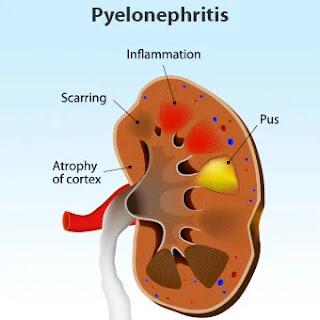Meniscus Tear Of The Knees
The meniscus is defined as
a piece of cartilage that helps in providing a cushion between the femur,
thighbone and tibia, shinbone. Two menisci are there in each knee joint.
These can be damaged or torn during activities that tend to put pressure on it
or rotate the knee joint. A hard turn on the football field or sudden pivot
on the basketball court can end up as a meniscus tear. It is not that only
athletes suffer from such pain. Rather anyone who gets up too quickly from a
squatting position can also end up causing a meniscal tear. The treatment is
totally dependent on the severity of the injury. One can take preventive
measures by doing exercises that strengthens the leg muscles.
Causes of Meniscus Tear
The meniscus is torn during activities creating direct pressure or
contact from a forced twist or rotation. A sudden pivot, deep squatting or even
heavy lifting can lead to such injuries. Sports like football, basketball,
soccer and tennis have sudden turns and stops which may be risky for this tear.
These symptoms are seen more often in growing children who are engaged in
participation of such sports. Moreover, when the child is seen focused on just
one sport, then meniscus tear is likely to take place. A study says that
meniscus weakens with age. Tears are seen to be more common in people who have
crossed 30. In case of a person suffering from osteoarthritis, the risk of the
injury is higher. However, when an older person is suffering from meniscus tear,
it is likely to be related to degeneration. At this point the cartilage in the
knee becomes weaker and thinner thus making it prone to tear.
Meniscus Tear Symptoms
Generally a popping sound is heard at the time of the injury
around the knee joint. Later on one may experience-
- Pain, especially when the area is being touched.
- Swelling
- Difficulty is observed at the time of moving the knee or an inability is seen to move it in a full range of motion
- The feeling of the knee while locking or catching
- A feeling that the knees are giving way or are unable to support oneself.
A slipping and popping sensation is an indication that a piece of the cartilage is becoming loose or is blocking the knee joint. A doctor shall be called upon quickly in case if the knees get locked or when the knee cannot be bent after straightening it.
Meniscus Tear Diagnosis
The doctor will examine the knee and range of motion at first. The doctors will closely look ad identify the spot where the meniscus is seen along with the joint. If required a McMurray test shall also be done to identify the tear. It involves bending, straightening and rotating of the knees. If a pop sound is heard during this time, then the chances of tear are more.
Knee X Ray is not helpful in determining the disease; rather it helps in identifying the other causes, like osteoarthritis.
MRI helps in taking pictures of the knee which in a turn is done in every month. MRI also helps in taking pictures of the cartilage and ligaments. At times it may not be detected easily as they resemble degenerative or age related symptoms. MRI's have helped in reducing the need of arthroscopy in some people.
An ultrasound has strong sound waves to take images that are placed in the body. It helps in seeing whether the cartilage is loose or not.
Arthroscopy leads to making a small cut or near the knee. In case if surgery is required then the doctor shall prescribe for the same. In arthroscopy a small cut is made near the knee. It can be seen that a small device is entered through the incision.
Treatment of Torn Meniscus Tears
Initially RICE treatment, that is rest, ice pack, compression and elevation should be done. One should avoid putting full weight on the injured knee. A physical therapy shall also be recommended for better healing. It helps in reducing the pain and increases the mobility and stability of the knee. Medications can be taken by ordering form the best online medical app in India or by buying it from the nearest store.
- Ibuprofen (Advil)
- Aspirin (Bayer)
- NSAID as recommended
If the knee is seen that it is not responding to the above stated treatments then an arthroscopic surgery is recommended. The surgeon is said to make a small incision in the knee. Then trimming or repairing of the damaged meniscus is done. The recovery period is about six weeks and a knee brace as well as crutches are a mist during this time.
Outlook
A proper diagnosis and adherence can help in functioning of the knee as it was before the injury. If it is not treated with a surgery then the chances of it being healed only depends on the severity and location of the tear. As cartilage does not have a significant blood supply, thus the ability to heal is low. However, some areas of the meniscus like outer portions have more blood vessels and thus are more likely to heal.






Comments
Post a Comment